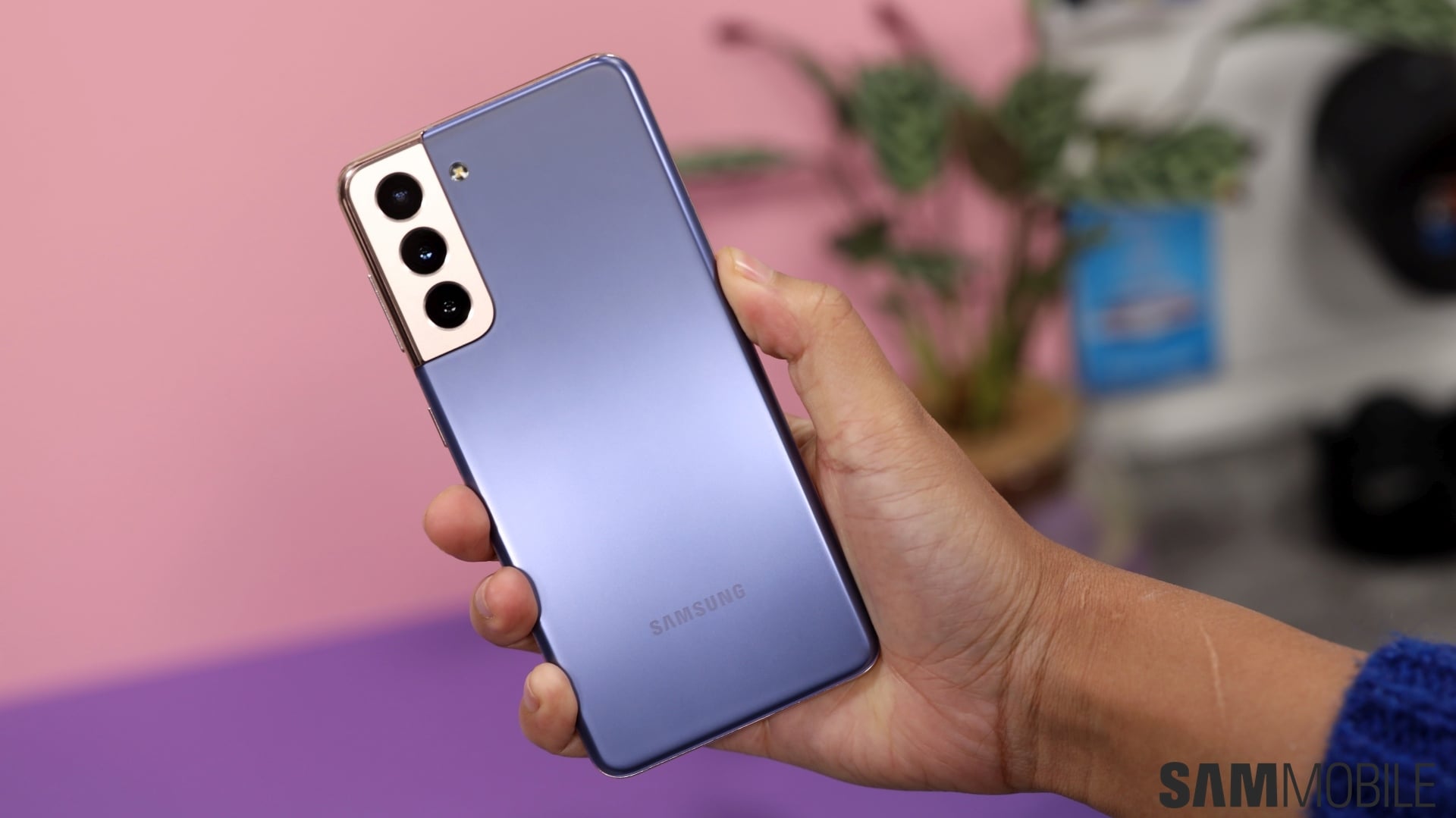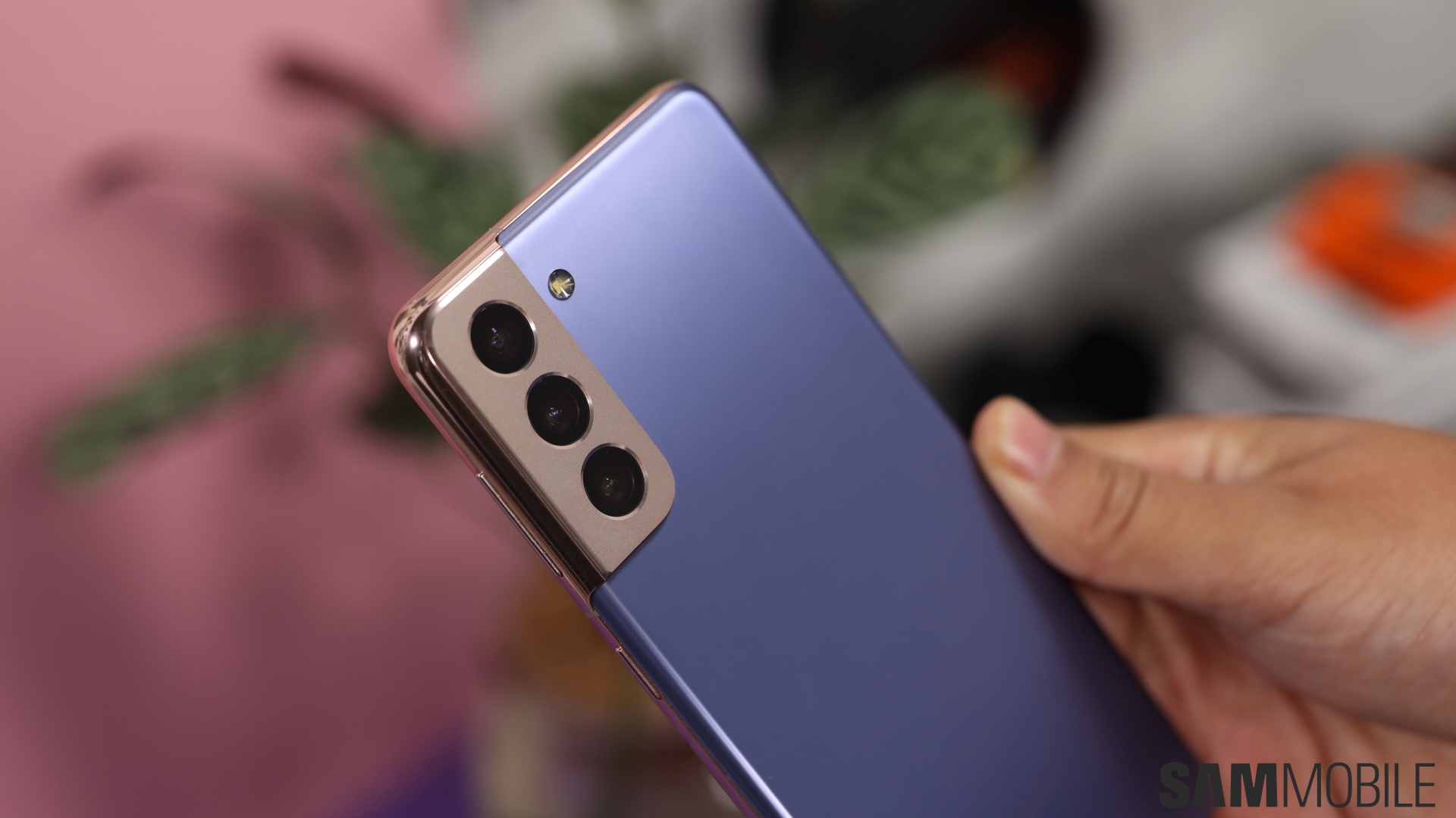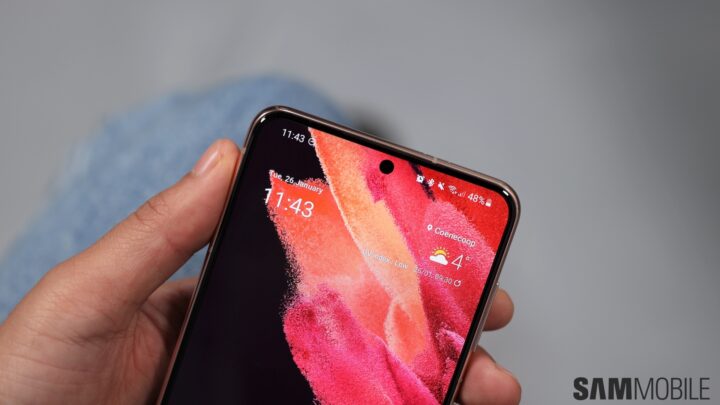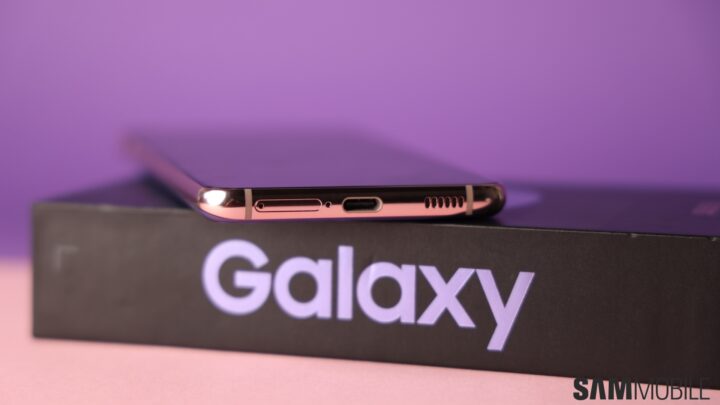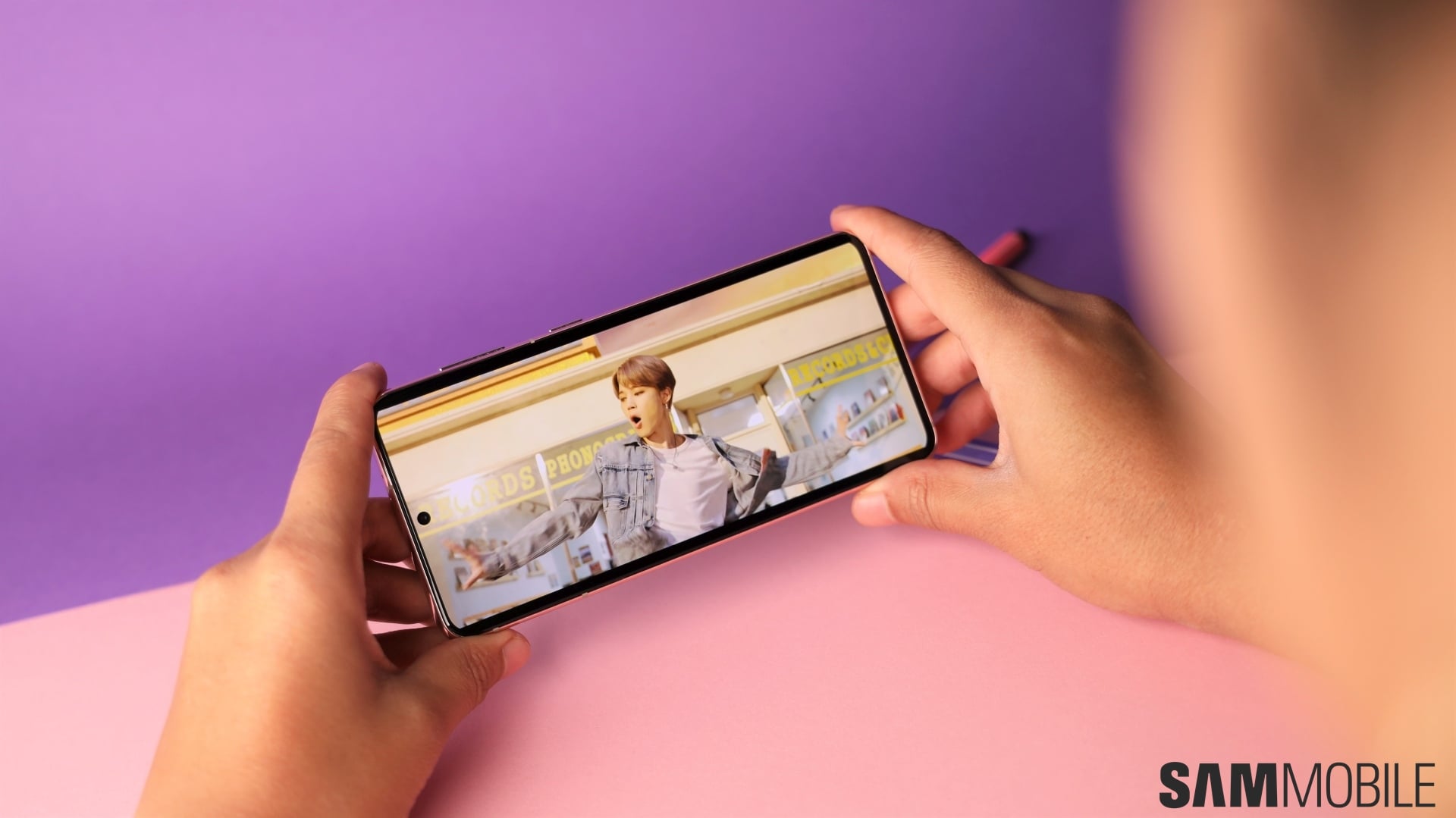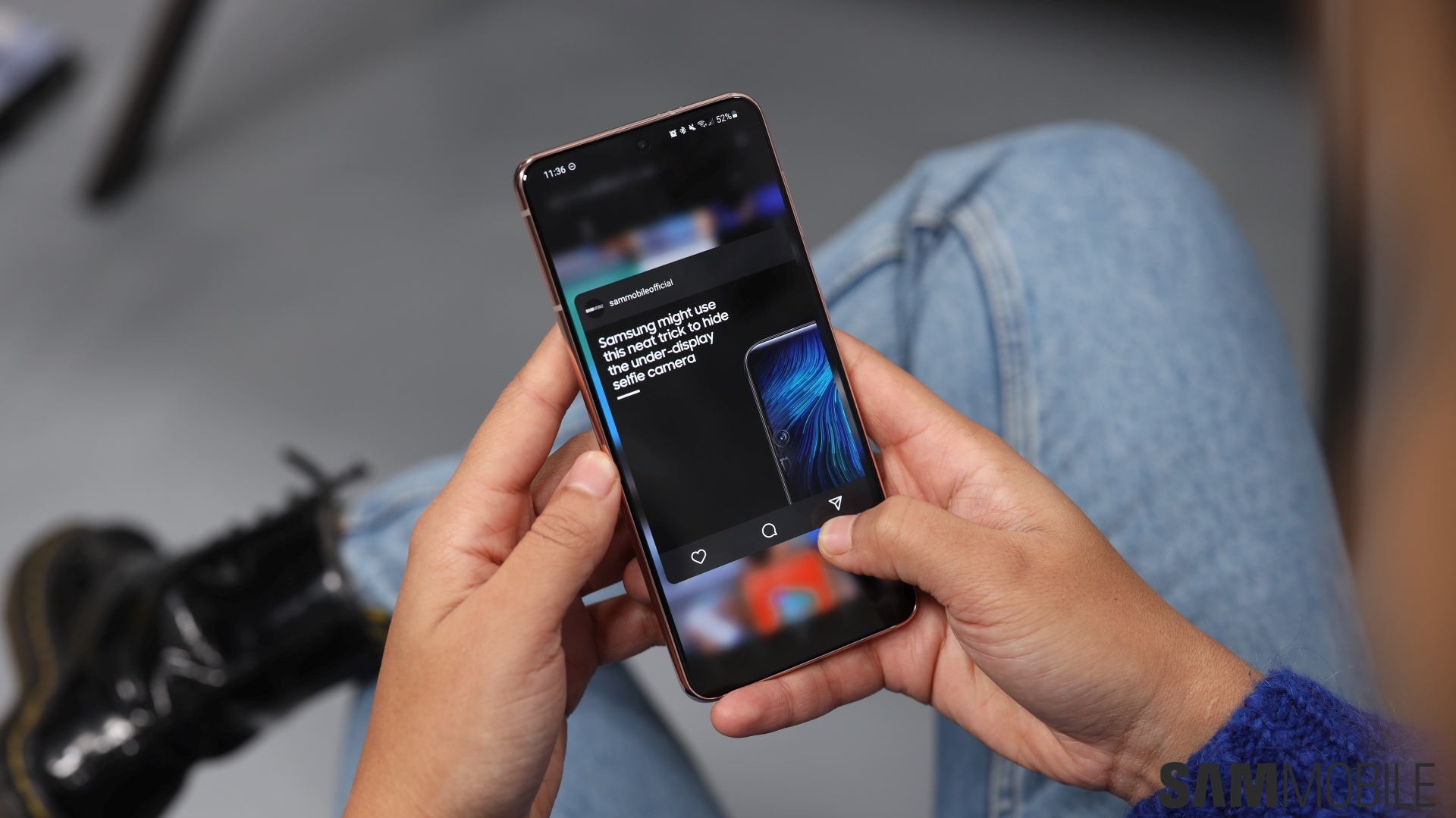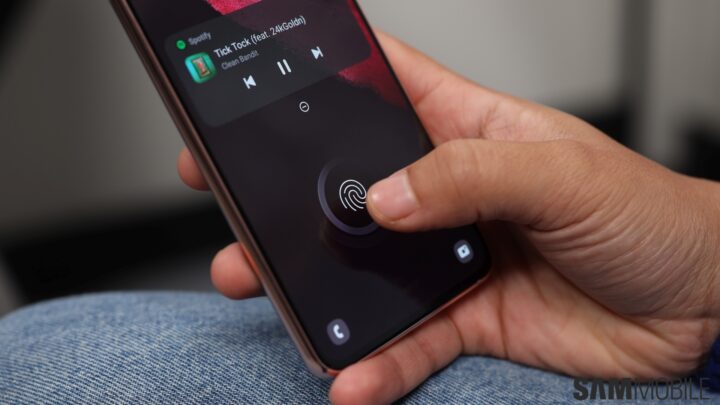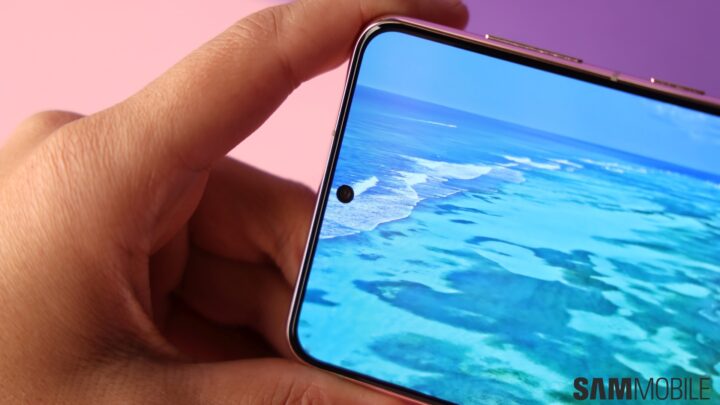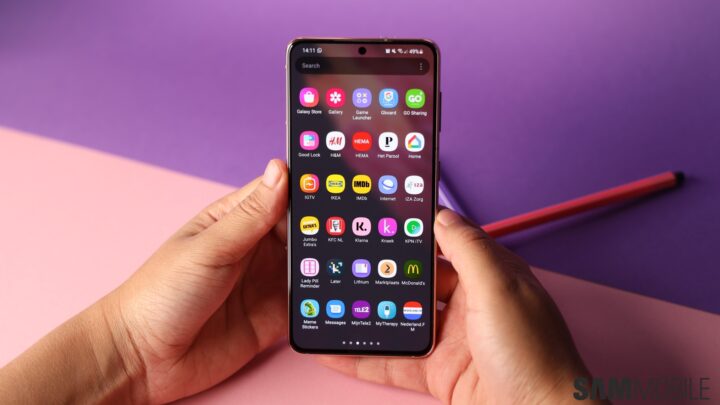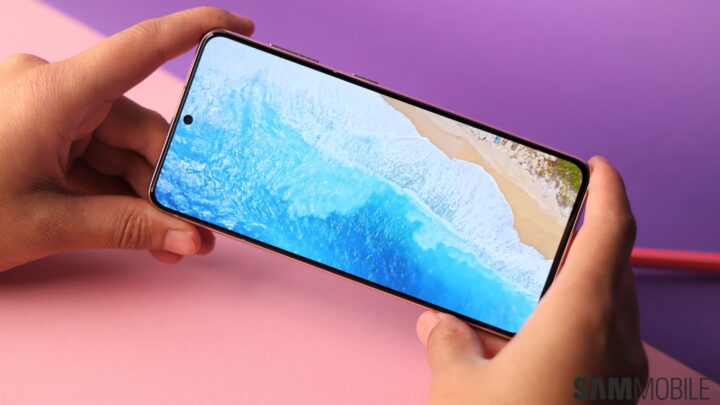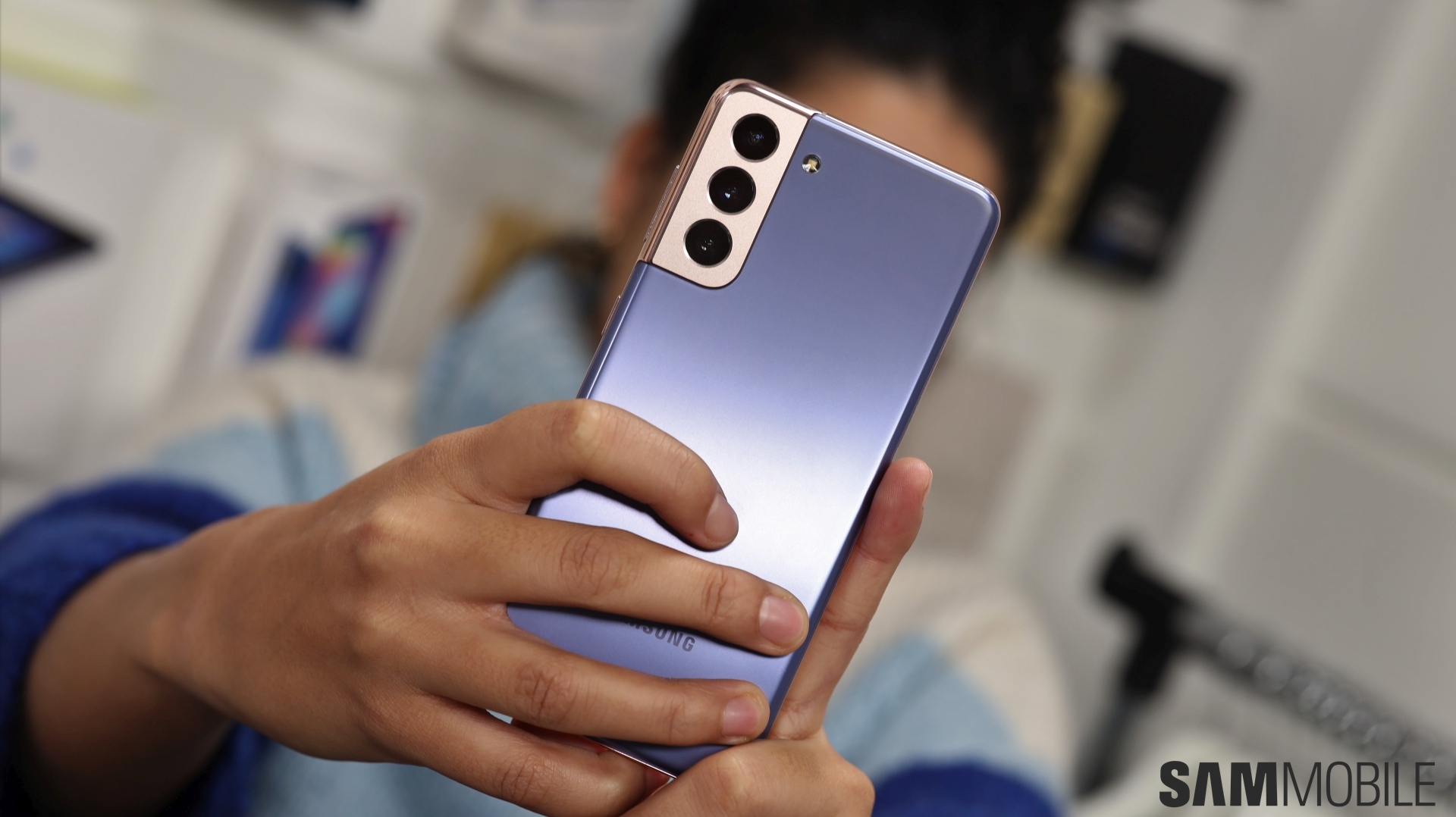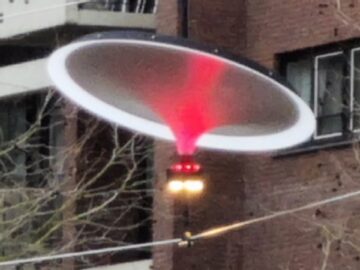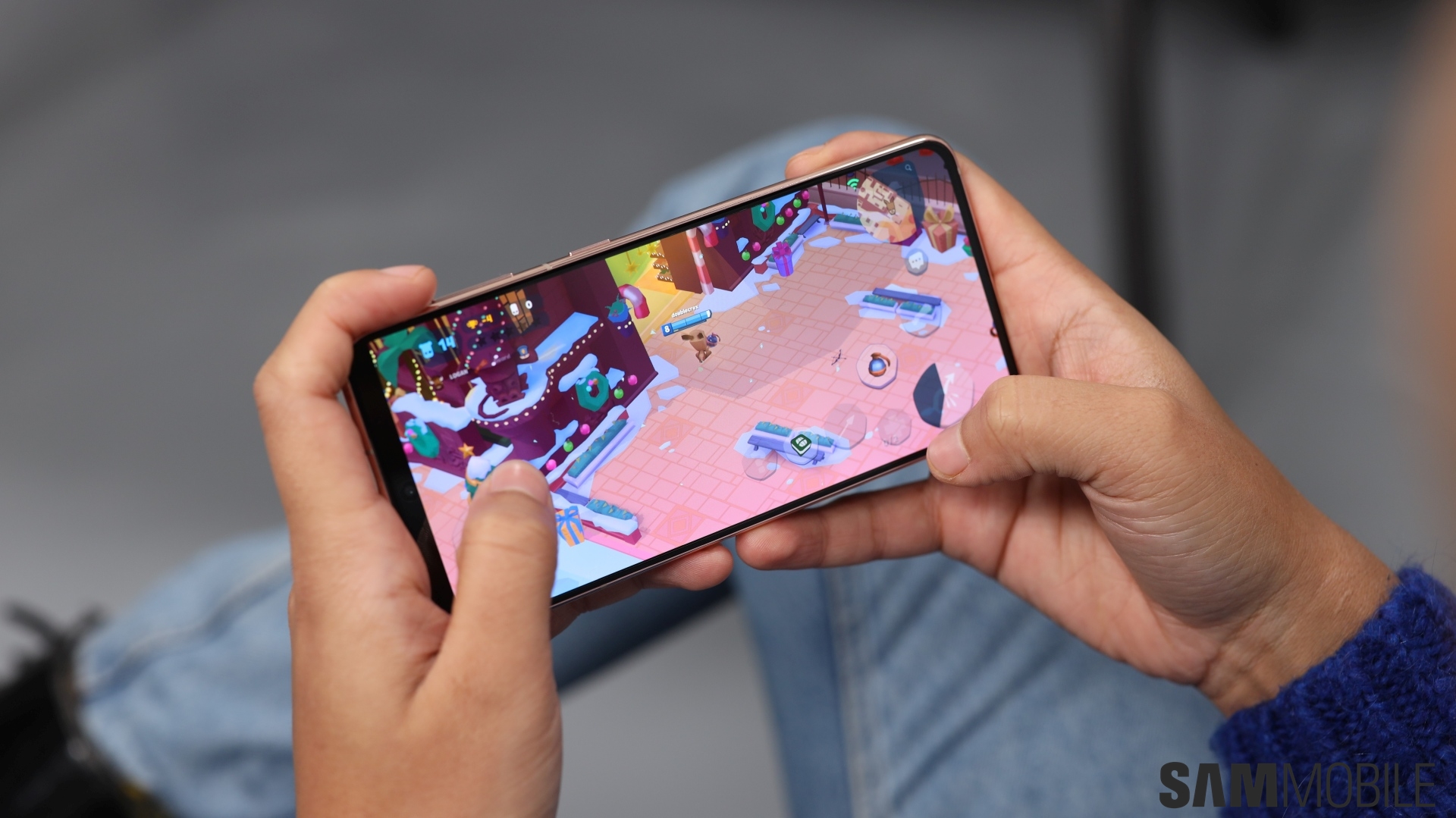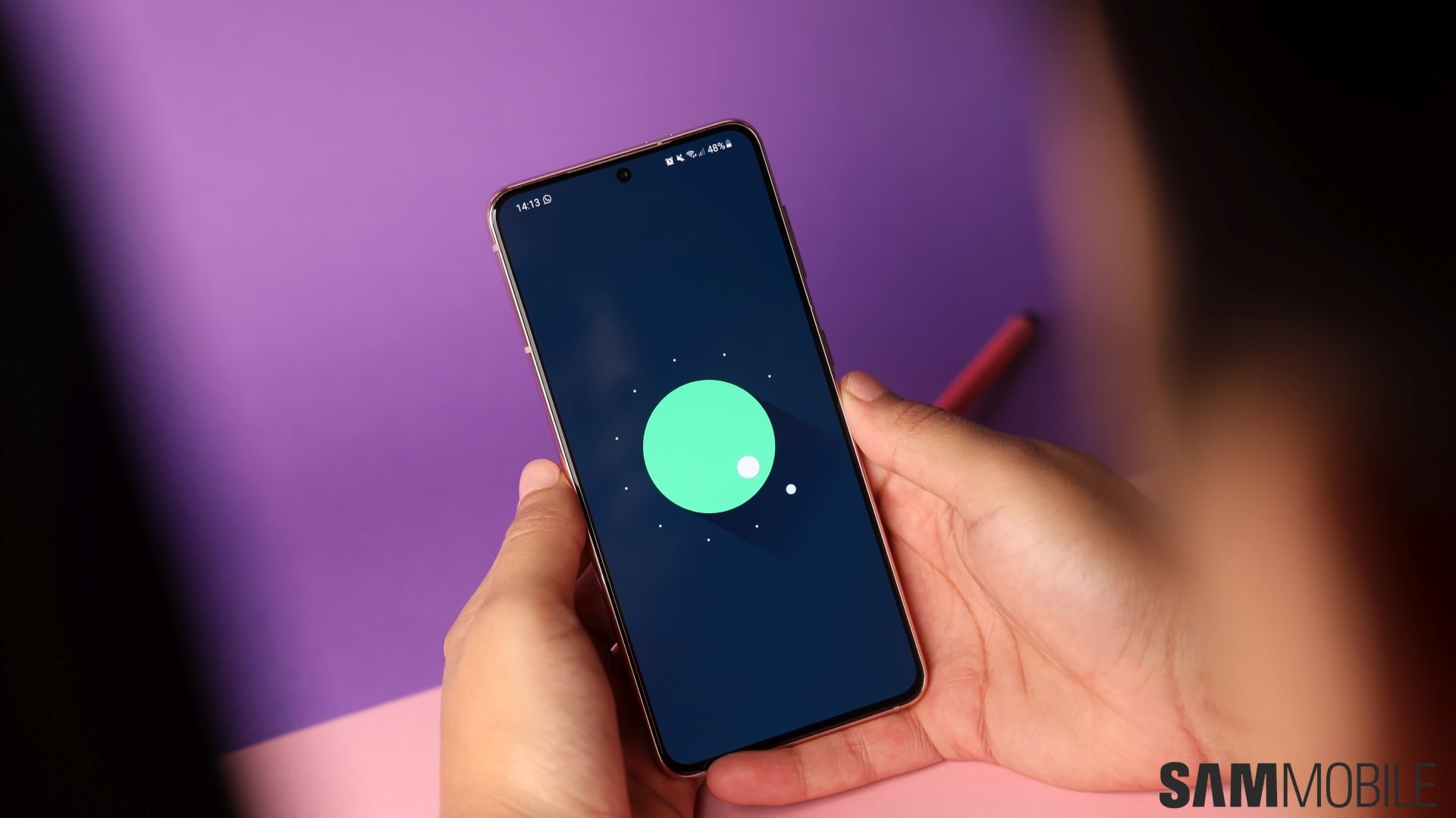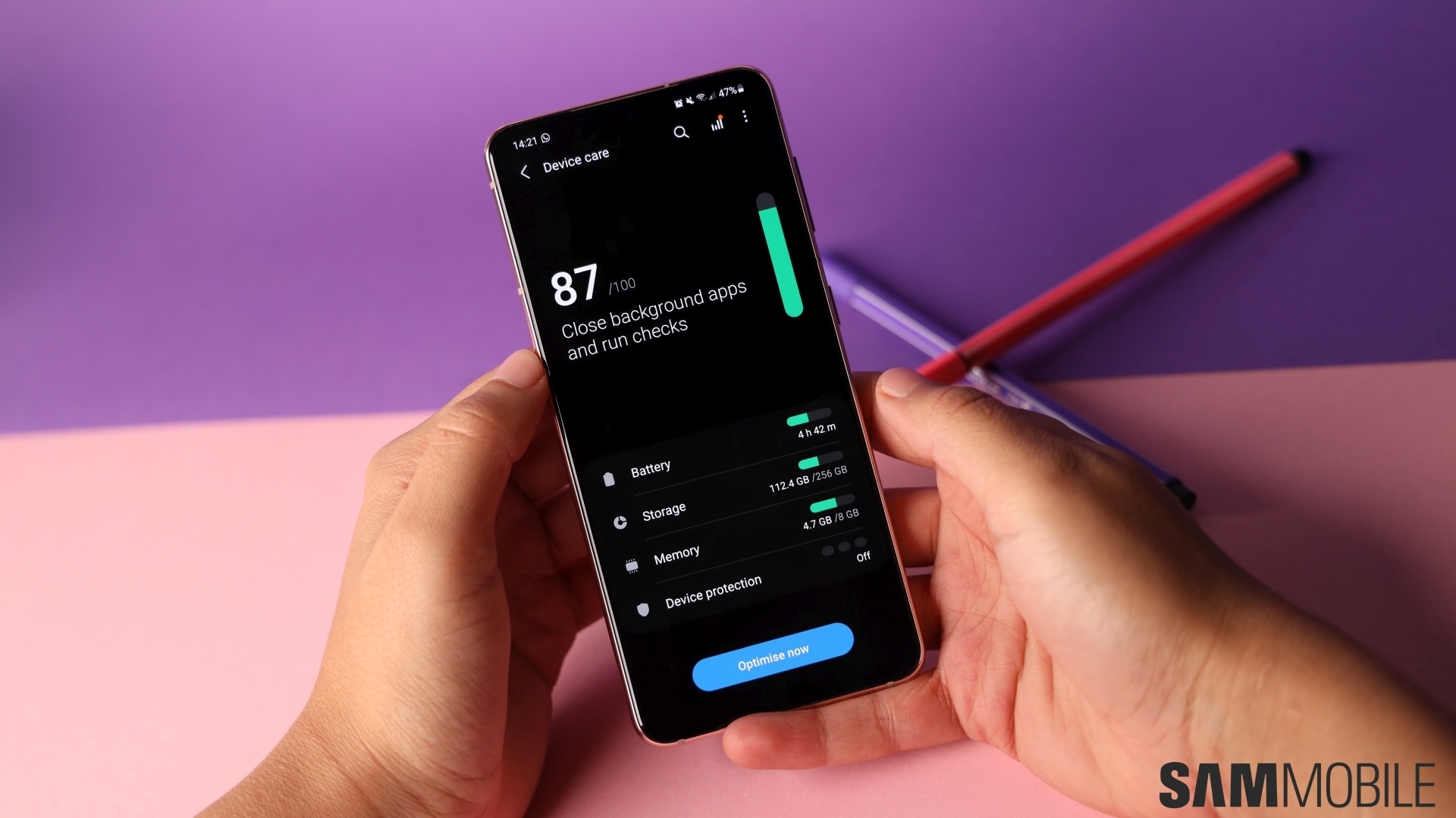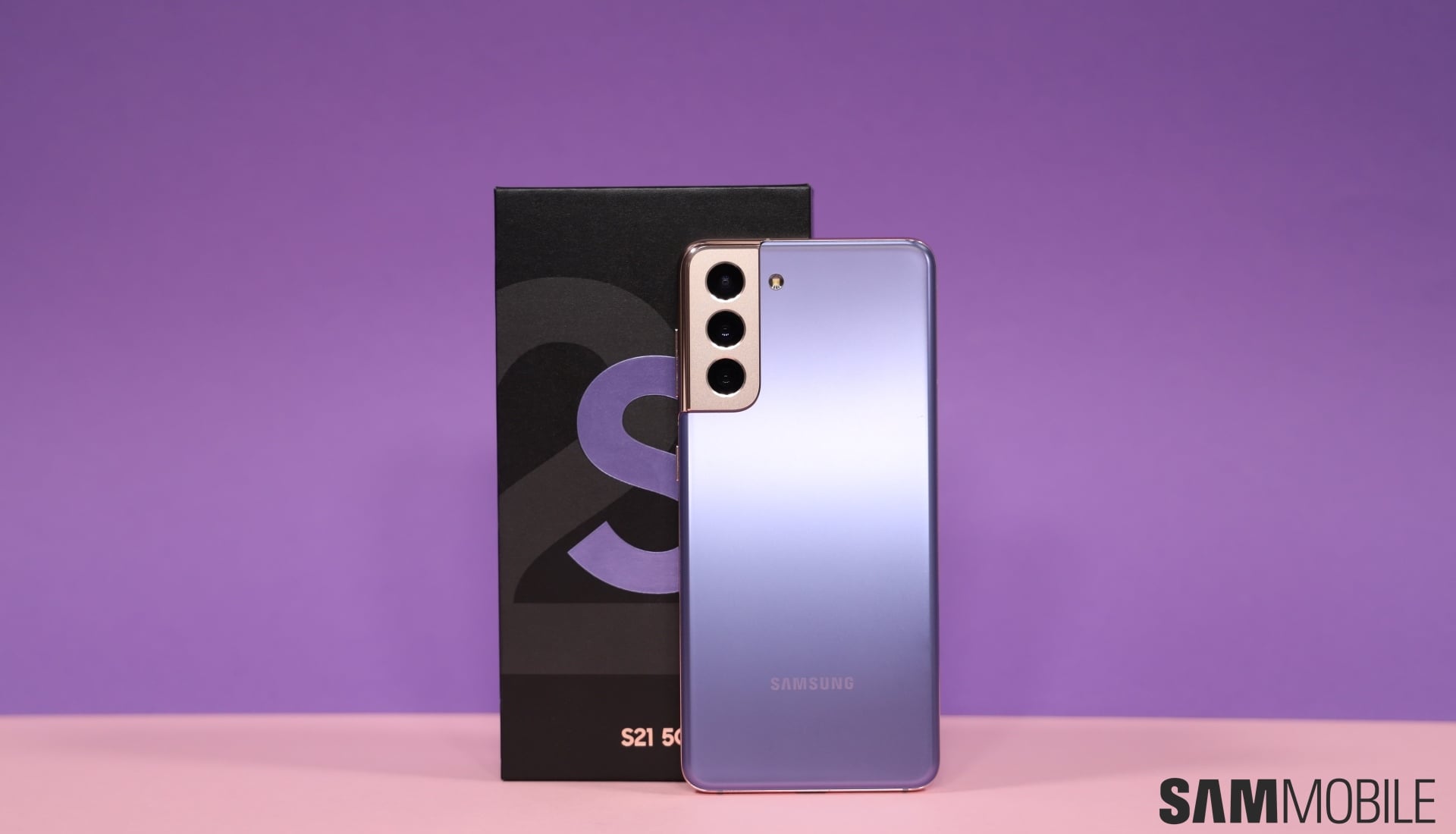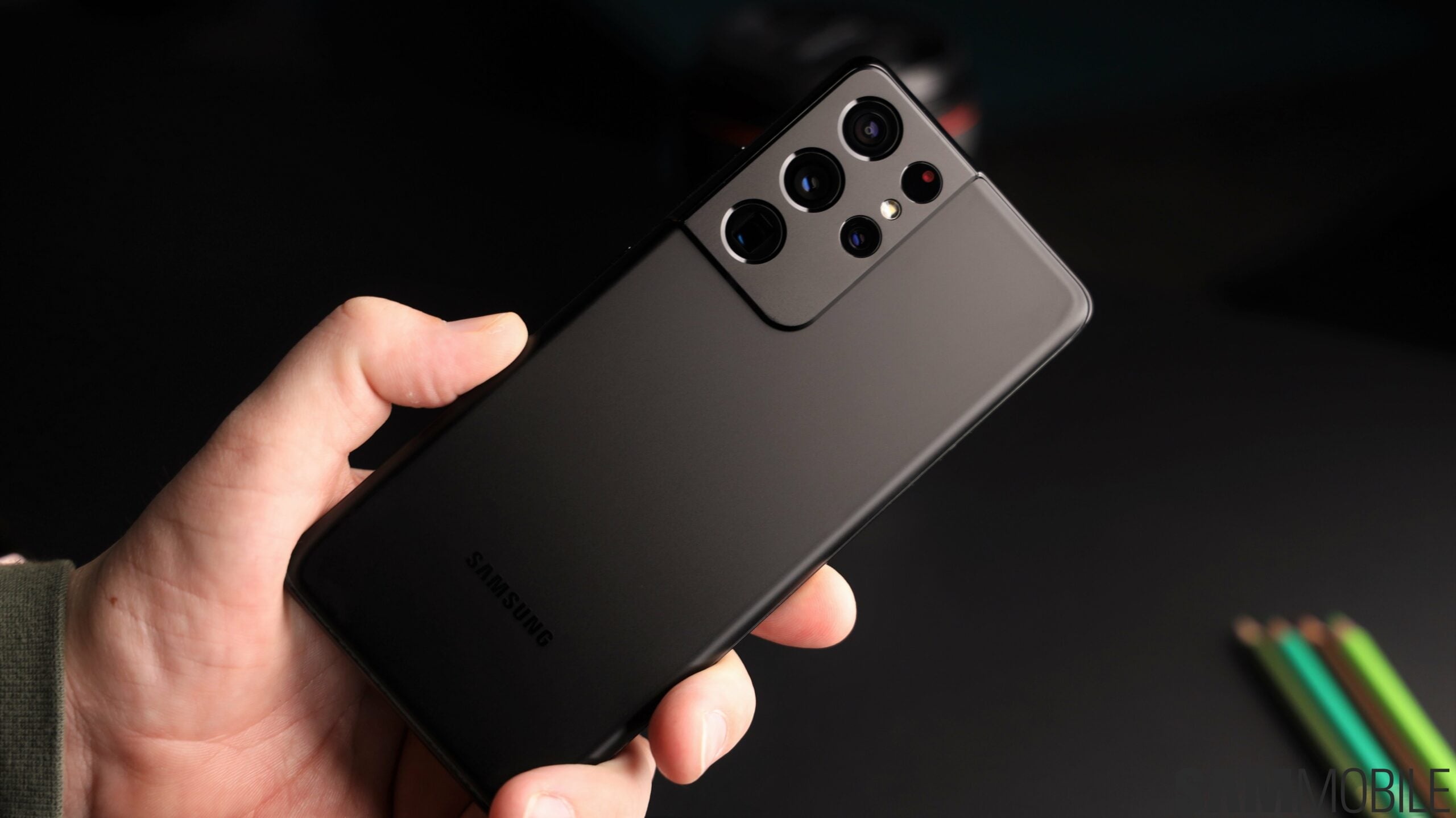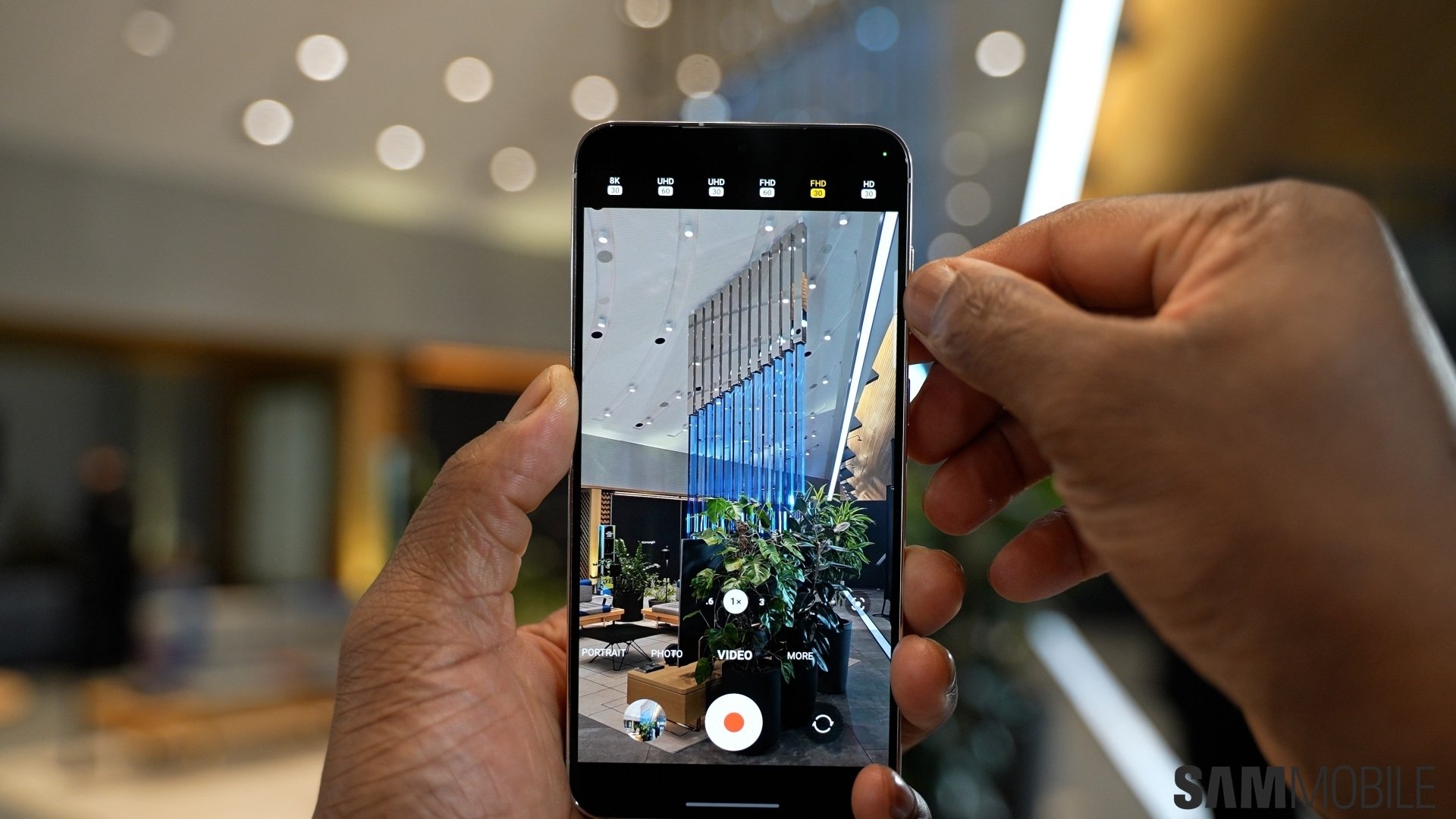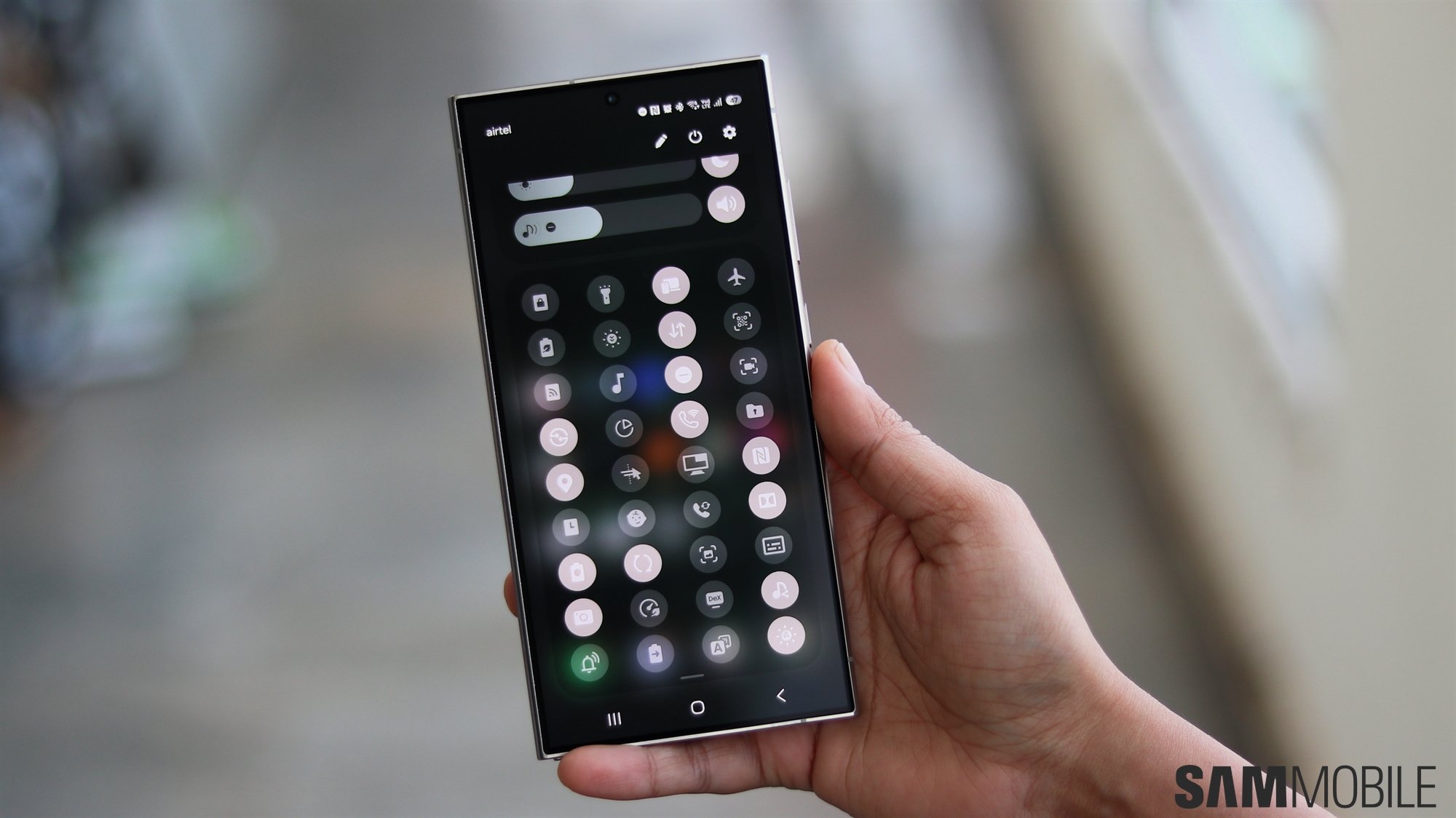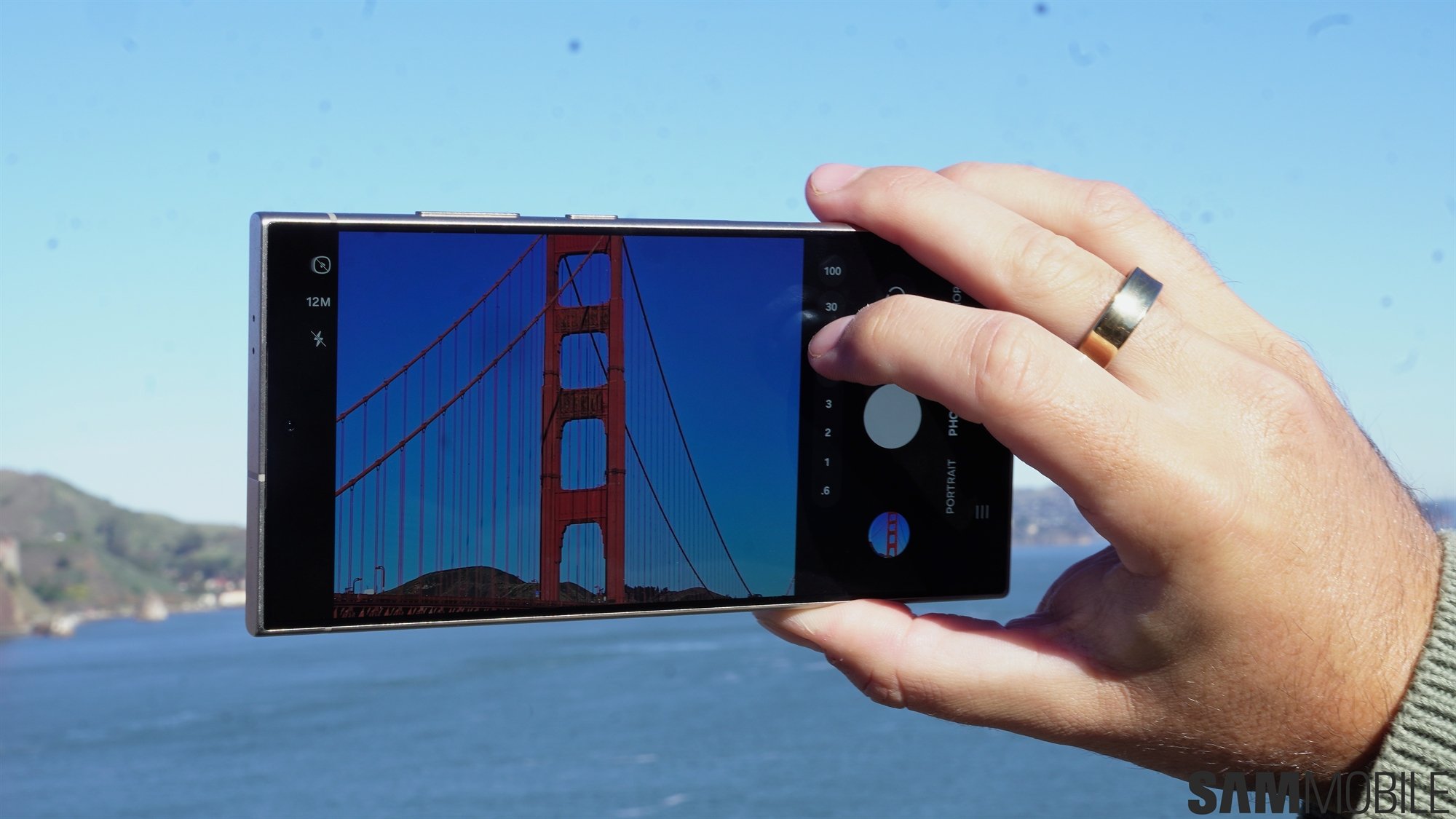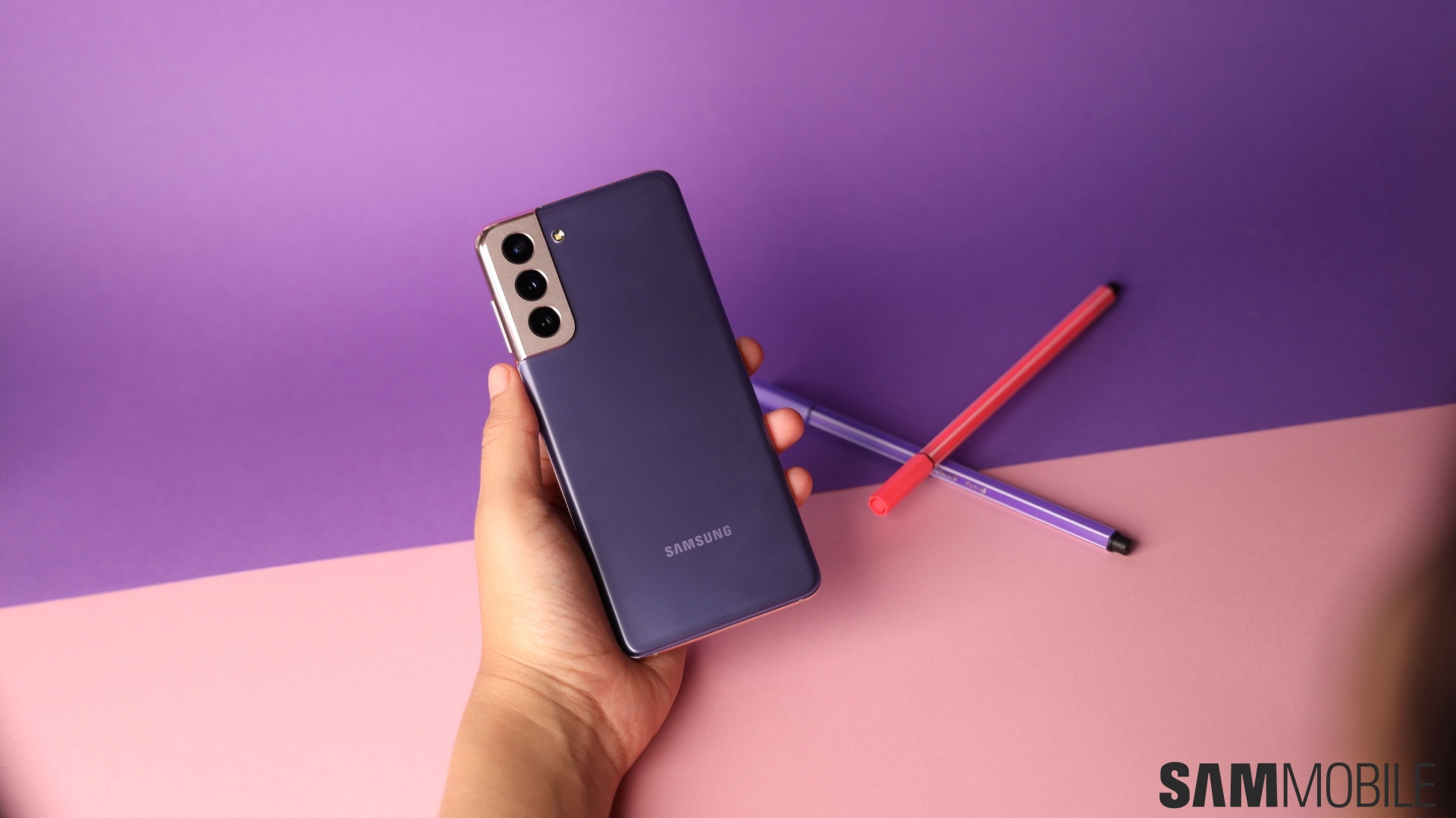
Samsung has made plenty of sacrifices to reach the $799 price tag of the Galaxy S21. It has a plastic back, a flat display, and the same camera hardware as its predecessor, and it misses out on a microSD slot and, in some markets, it lacks MST support for Samsung Pay. You don't get a charger or earphones in the box, either.
Samsung proved with the Galaxy S20 FE last year that a cheap phone doesn't have to be a bad phone, but does that mean the Galaxy S21 is similarly good and worthy of your attention and hard-earned money? This review aims to answer that, so let's get started.
Note: This review is based on the Exynos 2100 variant. 5G networks were not used during the review period.
Design
Plastic. Any mention of that word around flagship phones is frowned upon, but Samsung is trying to buck the trend. That's a good thing, because while the Galaxy S21 doesn't feel as premium as the Galaxy S21 Ultra, there's nothing cheap about it, either. A plastic back makes the phone considerably lighter and grippier as well, and you can rest assured you won't be walking around with a cracked phone should it take a tumble down to the floor without a case on.
In fact, I have been using the Galaxy S20 FE the last few months and have gotten comfortable with the idea of not using a case, and the Galaxy S21 is a phone that definitely shines without one. That's because Samsung is selling the Galaxy S21 in a bunch of beautiful colors. Our Phantom Violet S21 is just gorgeous, and with the new “contour cut” design, which sees the metal frame blend seamlessly with the rear camera housing, these phones look absolutely stunning. And I love the matte finish on the Galaxy S21 series, because it looks great and hides fingerprint smudges very well.
The only odd design choice here is having the microphone next to the SIM card slot at the bottom. It stood out to me while I was switching to the S21, and if I hadn't looked twice, I would easily have made the mistake of putting the SIM ejector pin in the microphone hole. It seems that wouldn't have actually damaged the microphone, as it is laid sideways inside the body instead of facing downwards, but it's still something Samsung should have thought of when designing its new flagships.
Display
The Galaxy S21 has a 6.2-inch Infinity-O display that has an adaptive refresh rate of 48-120Hz. Samsung has made a number of changes to the non-Ultra models this year. Both the S21 and S21+ have a flat display, and their resolution maxes out at Full HD+. But that doesn't mean you're not getting one of the best displays out there. The S21's display is sharp, beautiful and bright and has excellent viewing angles. The bezels are pretty small, too.
The high refresh rate makes animations and scrolling extremely smooth. Thanks to the adaptive refresh rate, which drops it down to 48Hz depending on what you're doing, the S21's display feels smoother than the displays on last year's S20 models, and it uses less power as a result. Naturally, the S21 is pretty compact, too. The 6.2-inch display felt small to me compared to the Galaxy S20 FE, but it's great for one-handed use and is perfect for anyone not in the market for oversized smartphones.
Unfortunately, I experienced some hiccups with the touchscreen. Scrolling through various apps was jittery at times, and it seemed like the scrolling action was leaving a trail behind. Not a good look considering the touchscreen issues that plagued some Galaxy S20 FE units, though there's hope Samsung will be able to fix them through software updates on the Galaxy S21 as well.
The upgraded ultrasonic in-display fingerprint sensor is very fast, and I don't think it ever missed recognizing my fingerprint. However, our editor-in-chief doesn't feel the S21 Ultra's fingerprint sensor is faster than the sensor on last year's Galaxy flagships, so your experience may vary. Still, improvements have certainly been made, and they're quite welcome.
Camera
The Galaxy S21 (and S21+) has the exact same camera hardware as the Galaxy S20: A 12MP F1.8 main shooter with Dual Pixel autofocus and optical image stabilization, a 12MP F2.2 ultra-wide camera, a 64MP F2.0 zoom camera with OIS, and a 10MP F2.2 selfie camera with Dual Pixel autofocus. As such, we weren't expecting the picture quality to be too different, and while that's true for the most part, Samsung does seem to have pared down the oversaturation, resulting in more realistic looking photos from the main camera.
Daylight photos taken outdoors are bright, sharp, and have good dynamic range – I think the sharpness can go overboard at times, but that may be because I'm looking at them on a smaller screen. Nighttime performance is okay. Nighttime shots taken indoors continue to feel soft with a lot of overprocessing going on, but you can use Night mode to get around that. The selfie camera is pretty good, too. Selfies taken outdoors are fairly sharp, while indoor photos are soft. Low-light selfies range from useless to surprisingly good, but it's usually the former.
A few photos taken with the main rear camera:
Like the Galaxy S20, the Galaxy S21 uses digital cropping of a 64MP image for 3x-30x zoom (making last year's Galaxy S20 FE technically superior). 3x shots are great and 10x zoom is more than usable, but anything beyond that is usually an overly soft mess, especially in low-light situations. However, the new Zoom Lock feature does mean that 30x pictures aren't a blurry mess as they were on the S20 and S20+, as Zoom Lock locks the frame in place and stops it from jumping around like crazy. Ultra-wide pictures, meanwhile, remain virtually unchanged in quality.
Here are a bunch of shots captured at 0.5x (ultra-wide), 1x (main camera), 3x, 10x, and 30x zoom levels:
The Galaxy S21 supports 8K video recording thanks to the 64MP camera, but it's best to just shoot videos at 4K because the 8K videos bring nothing but increased file sizes to the table and 4K videos already have plenty of detail. Speaking of 4K, the S21 doesn't support 60 fps recording on the zoom camera – that's reserved for the Ultra model. However, you do get Director's View. Director's View lets you see the output from and switch between all three rear cameras and the front camera at the same time, and it's great for influencers who are into making TikTok or Instagram videos.
Portrait mode, previously called Live focus mode, has a number of new studio-quality effects, such as High-key mono and Low-key mono which turn the background completely black or white and let you adjust the brightness of your face (possible both before and after taking the photo). I don't think the results are great, and Samsung could take a few lessons from Apple as far as bokeh photos are concerned. Samsung has also updated Single Take mode with the option to choose what kind of results you get, while Pro and Pro video modes now allow the use of the ultra-wide camera in addition to the main camera.
Here are some standard selfies along with a few portrait ones:
Performance
One of the biggest upgrades the Galaxy S21 series gets is newer processors. The Exynos 990 that powered 2020's Galaxy flagships was a subpar chip that attracted plenty of criticism, but Samsung has managed to put all of that behind with the Exynos 2100 that powers the Galaxy S21 lineup.
Our Galaxy S21 was very fast and smooth. Games run great, whether they support high refresh rate or not. There's just 8GB of RAM, but I never felt like it affected the user experience. Like the Galaxy S21 Ultra, the only area where performance was less than optimal was in the camera app. The camera app can be slow at times, especially when switching between the different modes, and the first two updates that have been released for the lineup leading up to the launch did nothing to fix it.
Unfortunately, there were also a few instances where the phone became unbearably hot, like when I was on a long WhatsApp video call and when using Android Auto. The plastic back might be partially to blame as plastic isn't a good heat conductor, but neither the Galaxy Note 20 nor the Galaxy S20 FE were as bad despite having polycarbonate backs. This is another issue that might need fixing with a software update, but we're two updates in and nothing has changed.
The Galaxy S21 misses out on advanced features like UWB (ultra-wideband) and Wi-Fi 6E support, but that's far less frustrating than the fact that there's no expandable storage on this phone. Like the S21+ and S21 Ultra, there's no microSD slot, and you get 128GB of storage on the base model that's going to fall short once you start using features like 8K video recording. There's 5G connectivity for quick cloud access, but 5G networks are in short supply right now and cloud storage requires additional expenditure as well.
Software, audio quality
The new flagships run Android 11 and One UI 3.1 out of the box and don't bring many new features to the table outside of the camera app. There's the option to have Google Discover on the home screen instead of Samsung's own news aggregator, video call effects that blur out the background in video calls made using apps like Zoom and Google Duo, the ability to remove location data from images before sharing them, and Private Share, a blockchain-based sharing app that lets you set an expiration date for shared files and protects shared images and videos from being screenshotted.
The Galaxy S21 is eligible for three major Android OS updates and will also get monthly security updates. And like the other two Galaxy S21s, it doesn't support Samsung Pay payments over MST (basically, it doesn't work with traditional card machines, only NFC ones) in some markets. For more information on the software, check out our Galaxy S21 Ultra review. That review also has the details you need on audio quality, as it's all the same across the three Galaxy S21 phones, including the lack of earphones in the box and a headphone jack.
Battery life
Battery life almost always has to be sacrificed for making small (by today's standards) phones, and it's easily the Galaxy S21's weakest aspect. I've been using the Galaxy S20 FE (Snapdragon variant) since it launched last year, and I was disappointed with the Galaxy S21's endurance. With light to moderate use, I could barely get through the day with three to four hours of screen on time.
With heavy use, I almost always had to charge the phone after 8-10 hours with around 4 hours of screen on time. All of that was with 120Hz mode enabled, and the results weren't much better with the high refresh rate turned off. This isn't a phone that can let you forget about the charger or give you ease of mind when you're going to be out and about for long hours, it's as simple as that. Carrying a power bank whenever possible is recommended.
Charging specs on the Galaxy S21 are the same as those on the S21+ and S21 Ultra. There's 25W wired fast charging support if you can find a 25W charger (that supports USB PPS) or buy one from Samsung that can charge the phone fully in a little over an hour. Fast wireless charging and reverse wireless charging support are included as well, though we don't suggest using the latter for anything but a smartwatch or Samsung's Galaxy Buds earbuds because of the small battery inside this phone.
Verdict
So, let's break it down: Should you buy the Galaxy S21? Well, if you're looking for a compact flagship phone with the latest features and a beautiful design, don't mind the lack of expandable storage or full-fledged Samsung Pay support, and are okay with your phone heating up at times (an issue that, should it be widespread, will likely be fixable through a software update), the Galaxy S21 will suit you well. It's not a huge step up over the Galaxy S20, but then not many people are upgrading their phones yearly so that shouldn't matter all that much.
If a compact phone isn't what you're looking for, then you might want to take a look at the $100 cheaper Galaxy S20 FE. Its LTE variant is powered by the Exynos 990, but it still offers excellent performance, long battery life, a high refresh rate display, pretty much the same main camera and slightly better zoom pictures, and, most importantly, a microSD slot and Samsung Pay with NFC support. It will also get updates up to Android 13, so even though it's older than the S21, it's not going to be immediately outdated once you purchase it.
P.S.: Want to know something about the Galaxy S21 that's not mentioned in the review? Ask me in the comments section and I'll do my best to answer.
[modelinfo model=SM-G991B]
Samsung Galaxy S21
What we like
- Beautiful high refresh rate display
- Unique, stunning and compact design
- Excellent pictures from main 12MP camera, neat new features like Director’s View
- Great 3x zoom pictures from 64MP camera, usable pictures till 10x zoom
- Fast performance with the Exynos 2100 processor
- More accurate newer generation in-display fingerprint sensor
- Eligible for three major Android OS updates
- 5G connectivity
What we don't
- Average battery life with both 60Hz and 120Hz refresh rate
- Gets very hot at times
- Cameras, while good, are not an upgrade over the Galaxy S20
- No microSD slot, 128GB base storage
- Samsung Pay doesn't support MST in some markets
- No charger or earphones in the box












